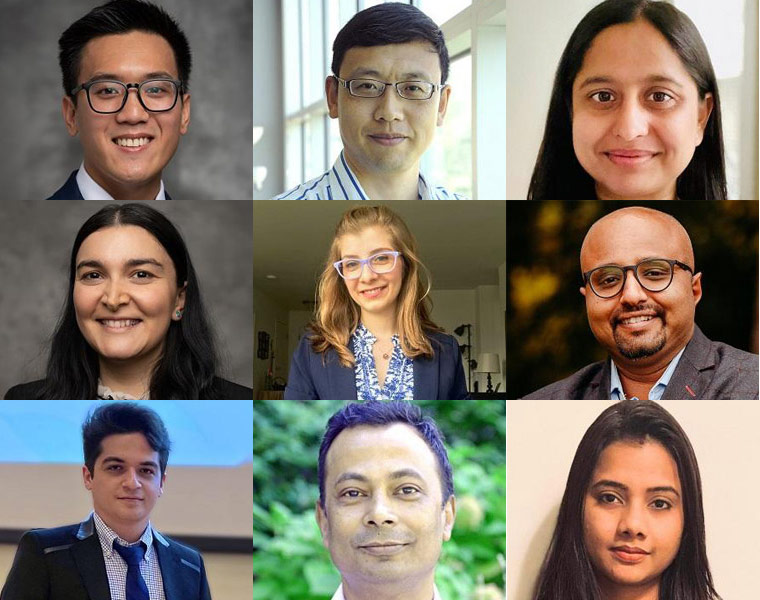This article is part of a series focused on highlighting student involvement in research at Case Western Reserve University. Carson Smith is a PhD student in the Department of Pathology who’s passionate about research, science communication, and the intersections between them.

When the first targeted therapeutic for cancer hit the market, it quickly improved countless lives and inspired a whole new class of drugs. But the drug’s development was a long time coming—42 years, to be exact.
That’s how long it took from when researchers at the University of Philadelphia discovered a mutation known as the Philadelphia Chromosome in 1959 to when the FDA finally approved Imatinib, the drug designed to target it. Grants and federal programs now exist to help accelerate drug approval, but, unfortunately, biomedical research still lags behind clinical needs.
At Case Western Reserve University, that’s where the Translational Fellows Program (TFP) comes in. Offered through the School of Medicine’s Office of Innovation and Entrepreneurship, the program provides junior researchers interested in entrepreneurship with unique training and support designed to shorten time-to-market for the innovative technology they develop.
The third class of TFP participants recently began the program, composed of nine candidates who are researchers and innovators in oncology, biomedical engineering, emergency medicine, neurology, and obesity and diabetes. While they vary in the positions they hold at CWRU—some being research associates, post-doctoral researchers, or senior PhD students—all are united by their interest and commitment in bringing their products to market where they can directly impact the lives of patients.
How the program works
In the TFP, trainees connect with resources and opportunities based in Ohio as they spend a fellowship year being mentored by local experts and entrepreneurs through the CWRU Venture Mentorship Program. For past participants such as Yehe Liu (2020-2021), these resources have been critical to guiding the path forward as an entrepreneur.
Liu, a cofounder of the start-up OpsiClear, was encouraged by Cheryl Thompson, then-director of the TFP, to pursue a Small Business Innovation Research (SBIR) grant, a type of federal grant intended to help biotechnology companies develop products for commercialization. He won the grant—one that is now funding his efforts to explore the commercialization potential of optical imaging technology in clinical imaging. But without Thompson’s advice, Liu says he wouldn’t have even known to apply.
In addition to mentorship, TFP fellows also have access to innovative programs that help them conduct primary market research, thereby finding where their technology could best be leveraged among existing treatments and helping guide additional research questions in the lab. Current fellow Jeeda Ismail cited one such program, I-Corps@NCATS, as one of her major reasons for applying to the TFP—an opinion shared by many of her peers. For Lauren Yeh (2021-2022), the I-Corps@NCATS, an interview-based market assessment tool, was incredibly influential in developing her business plans and market audience for advancing new lung therapeutic treatments.
Critically, the TFP pays 20% of fellows’ stipends or salaries, helping them to spend time away from the lab and on their professional and business development with less need to worry over finances.
“A lot of people ask us what our expectations are about what students get out of the program,” explained Tessianna Misko, director of career and professional development in the Office of Graduate Education. “Our measure of success is that they get something out of this and that they grow in this program. It’s all about our people.”
Program successes
By Misko’s metric, the program is a resounding success. Since taking part in the TFP, several fellows have launched start-up companies, including Jessica Scarborough (2020-2021), whose company, CisSig, just received a Cleveland Clinic SPARK grant to help move forward in clinical validation of a diagnostic tool for bladder cancer.
Other fellows, including Liu and Yeh, cited the mentorship and networking that the TFP provides as critical for helping them move their projects forward. Yeh said that while her lab has not yet created a company or final product, her time in the TFP was integral to helping identify the kinds of experimental questions they needed to ask to create such a product. She is currently continuing her entrepreneurial education by interning with Wave Strategy, a local firm that focuses on early-stage technology development.
Other former fellows are now finishing their medical degrees, adding clinical medicine to their training in entrepreneurship and research science. One such fellow, Adam Lauko, said he plans to use his experience in the TFP in an academic setting to help guide his future lab’s projects toward translational questions.
It is still a long road from research benchside to clinical bedside, but the TFP is working to prepare CWRU trainees to take that journey. By building networks and providing training, fellows are able to develop into scientists who are interested in taking their research into the clinical space. This unique opportunity to combine entrepreneurship with research is just one way that CWRU is preparing its trainees to succeed, no matter where they want to go.
Interested in becoming a 2023-24 Translational Fellow? Check out the eligibility requirements at the Translational Fellows Program website. Past fellows can also be found at the Translational Fellowship Program homepage.


